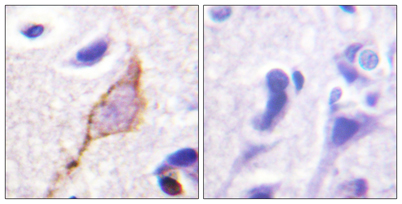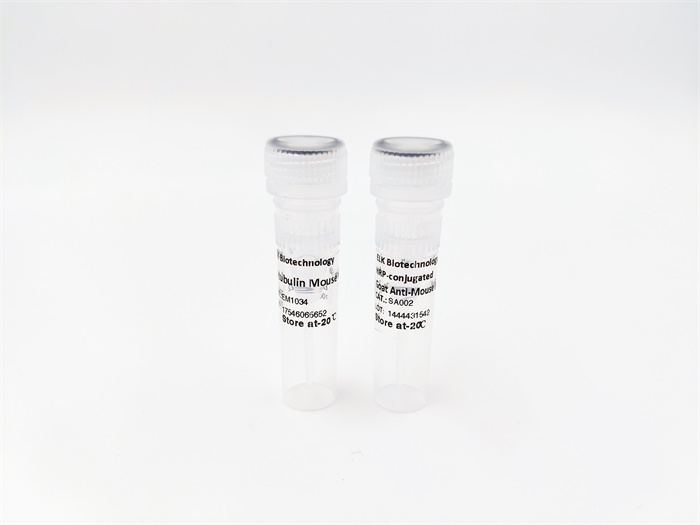| Product name: |
KCNQ2/3/4/5 rabbit pAb |
| Reactivity: |
Human;Mouse;Rat |
| Alternative Names: |
KCNQ2; Potassium voltage-gated channel subfamily KQT member 2; KQT-like 2; Neuroblastoma-specific potassium channel subunit alpha KvLQT2; Voltage-gated potassium channel subunit Kv7.2; KCNQ3; Potassium voltage-gated channel subfamily KQT me |
| Source: |
Rabbit |
| Dilutions: |
Immunohistochemistry: 1/100 - 1/300. ELISA: 1/10000. Not yet tested in other applications. |
| Immunogen: |
The antiserum was produced against synthesized peptide derived from human Kv7.3/KCNQ3. AA range:191-240 |
| Storage: |
-20°C/1 year |
| Clonality: |
Polyclonal |
| Isotype: |
IgG |
| Concentration: |
1 mg/ml |
| Molecular Weight: |
97kD |
| GeneID: |
3786 |
| Human Swiss-Prot No: |
O43526/O43525/P56696/Q9NR82 |
| Cellular localization: |
Cell membrane ; Multi-pass membrane protein . |
| Background: |
The M channel is a slowly activating and deactivating potassium channel that plays a critical role in the regulation of neuronal excitability. The M channel is formed by the association of the protein encoded by this gene and a related protein encoded by the KCNQ3 gene, both integral membrane proteins. M channel currents are inhibited by M1 muscarinic acetylcholine receptors and activated by retigabine, a novel anti-convulsant drug. Defects in this gene are a cause of benign familial neonatal convulsions type 1 (BFNC), also known as epilepsy, benign neonatal type 1 (EBN1). At least five transcript variants encoding five different isoforms have been found for this gene. [provided by RefSeq, Jul 2008], |








 Manual
Manual